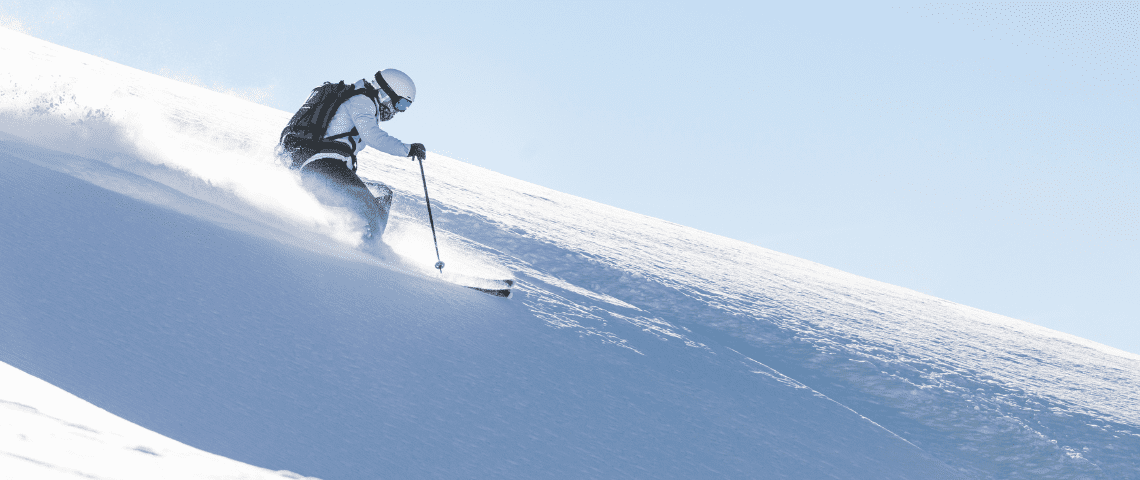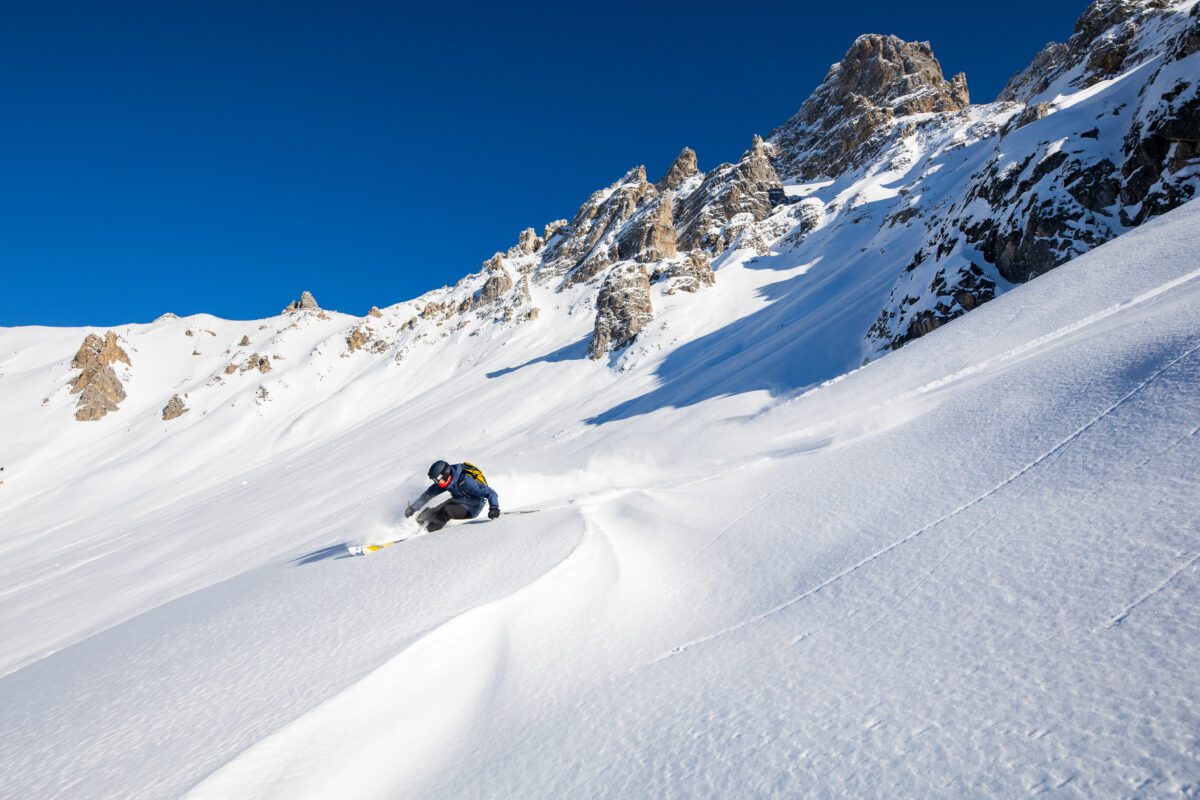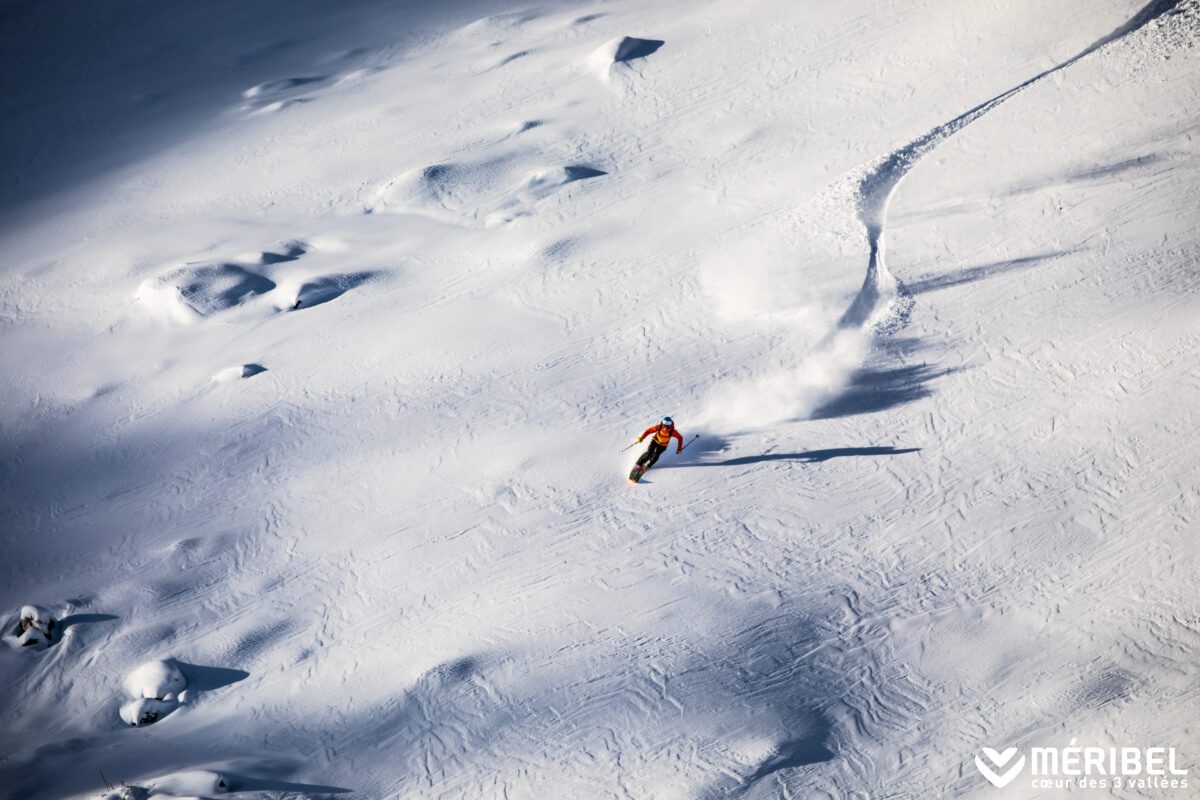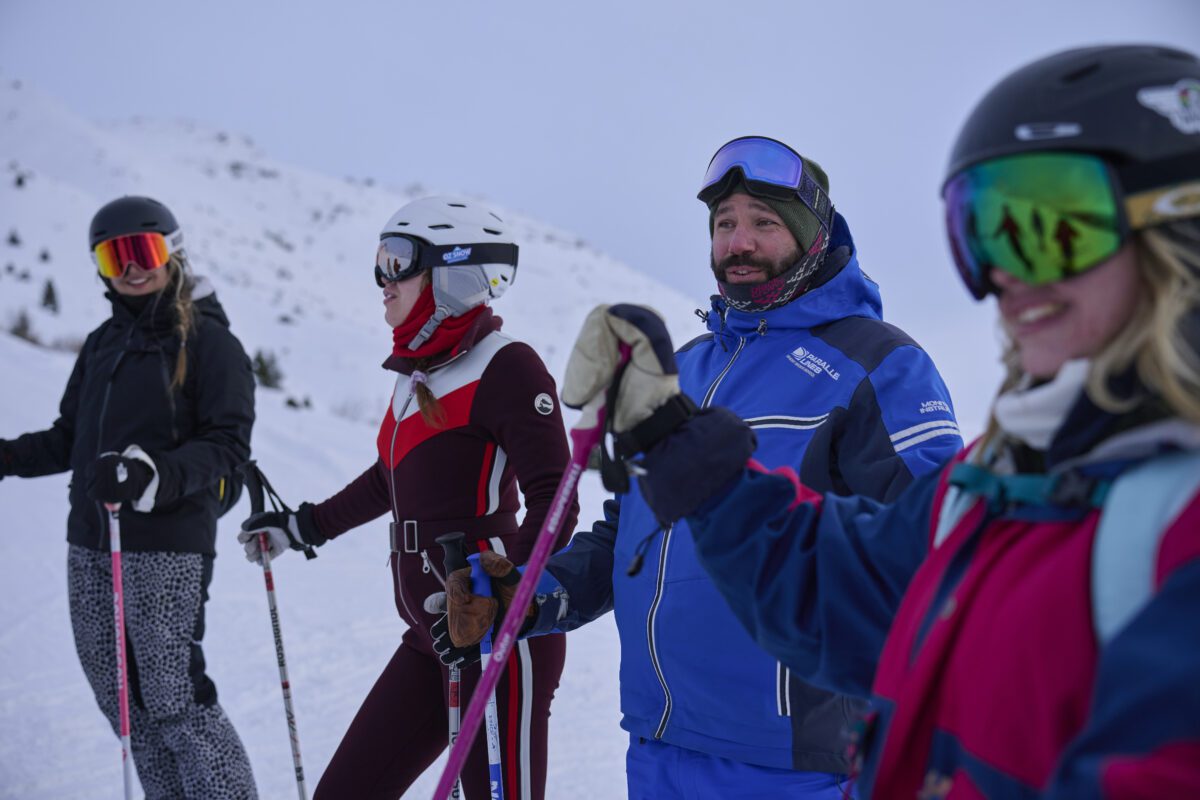
The Ultimate Guide to Off-Piste Skiing Beyond the Marked Trails
Off-piste skiing offers a thrilling alternative to groomed pistes, allowing skiers to explore the mountain’s natural beauty and untouched terrain. However, venturing beyond the marked pistes comes with its own set of challenges and risks. In this guide, we’ll cover everything you need to know about skiing off-piste, from essential safety equipment and avalanche awareness to building your skills and planning your adventure.
What Does Skiing Off-Piste Mean?
As the name implies, off piste skiing is when skiers or snowboarders venture away from the groomed pistes into the ungroomed, natural terrain of the mountain.
Understanding the Difference Between On-Piste and Off-Piste
On piste refers to the areas where runs are groomed by piste bashers and marked either side by coloured poles which indicate the difficulty of the slope. Off piste is the opposite and means skiing anywhere outside of the pisted slopes. Consider pistes the “controlled”, prepared and managed area whilst off piste is natural and unmaintained.
The Appeal of Untouched Powder
Untouched, fresh powder is a huge appeal for off piste skiers and snowboarders. Making those first tracks in untouched snow is truly something special and enables you to experience the true, natural beauty of the mountains. That being said, making first tracks on perfectly pisted snow is still certainly something special.
 Many off piste skiers and snowboarders are drawn to the untouched terrain for it’s natural beauty, increased challenge, serenity and adventure.
Many off piste skiers and snowboarders are drawn to the untouched terrain for it’s natural beauty, increased challenge, serenity and adventure.
Common Misconceptions About Off-Piste Skiing
A common misconception about off piste skiing is that you should learn back when in deep snow. Hit in actual fact, this can make it hard to control your skis!
Another common misconception about off piste skiing is that avalanches will only occur on very steep slopes or when there is an increased avalanche warning. Whilst avalanches are most common on slopes with a gradient of between 30° and 45° they can happen anywhere and even if the perceived risk is low/medium. Therefore, it’s important to be aware of signs of avalanche and be informed on avalanche safety precautions and response.
Essential Safety Equipment for Off-Piste Adventures
Avalanche Transceivers
An avalanche transceiver is an important piece of safety equipment for anyone heading off-piste. This device is designed to both send and receive signals, enabling rescuers or other group members to locate you if you’re buried under snow, and allowing you to find others in the same situation.
Modern avalanche transceivers are lightweight, easy to use, and equipped with advanced features such as multiple burial detection. However, owning one is only part of the equation—it’s just as important to practise using it regularly.
Probes and Shovels
Avalanche probes and shovels are indispensable tools for anyone venturing off-piste, playing a crucial role in avalanche rescue situations.
An avalanche probe is used to locate the exact position of someone buried under the snow. Once a transceiver narrows down the search area, the probe allows for precise pinpointing, making it vital for efficient and accurate rescue efforts. Probes are lightweight, collapsible, and designed to be assembled quickly, ensuring you can act without delay.
An avalanche shovel is equally important, enabling rescuers to dig out victims swiftly and effectively. These shovels are built to handle compact snow and ice, combining lightweight materials with durable construction for ease of carrying and reliability in tough conditions. Features like telescoping handles or multiple blade configurations can enhance efficiency, allowing you to dig more quickly and with less effort. As with probes, practising with your shovel in advance is always recommend.
Protective Gear and Specialist Equipment
In addition to your avalanche kit, proper protective gear and specialist equipment are important when heading off-piste.
A ski or snowboarding helmet is non-negotiable, providing protection against head injuries caused by falls, collisions, or debris in the natural terrain.
Appropriate skis or a snowboard designed for powder snow are equally important. Wider skis or boards with a rocker profile allow for better floatation in deep snow, improving control. If you’re new to off-piste conditions, consulting a professional for equipment recommendations is a good idea.
As when skiing on piste, wearing proper ski or snowboard clothing is also essential. If you’re going to be out in particularly extreme conditions, you may want to opt for some more specialist off piste gear for staying dry and comfortable in harsh conditions. Opt for waterproof and breathable outer layers, insulated mid-layers, and moisture-wicking base layers to ensure you’re protected from wind, snow, and fluctuating temperatures. Reinforced gloves, goggles with good visibility in low light, and avalanche backpacks with airbags can provide additional safety and comfort.
Understanding Avalanche Risk When Skiing Off-Piste
Reading Avalanche Forecasts
Before heading off-piste, checking out the avalanche forecast is a must. These forecasts provide a breakdown of snow stability, weather conditions, and avalanche risk levels for your chosen area. Resorts often display hazard ratings using coloured flags or signs at the base of the slopes. A common system ranks risk from 1 (low) to 5 (very high), but don’t be fooled by a ‘moderate’ level of 3—avalanche accidents still occur under these conditions so it’s always good to be aware of the risks.
To interpret forecasts, focus on key terms like “persistent weak layers” (a warning sign of instability) or “consolidating” (indicating improved stability). If you’re unsure, ask the locals or your guide for advice—there’s no shame in being cautious.
Identifying Dangerous Snow Conditions
Spotting the signs of unstable snow can make all the difference. Cracking snow, sudden ‘whumphing’ sounds, or visible recent avalanches nearby should all raise alarm bells. These indicators suggest that the snowpack isn’t stable and could potentially slide.
Be especially cautious after heavy snowfall or during rapid temperature changes, as these can destabilise the snowpack. Wind can also create dense slabs of snow on leeward slopes, which are more prone to sliding—pay attention to which way the wind has been blowing when planning your route.
Tip: Look at nearby slopes of similar aspect, altitude, and gradient. If avalanches have occurred there, it’s a good indication that the risk is high in your area too.
The Impact of Weather on Snow Stability
Weather plays a big role in avalanche risk. Fresh snowfall might be a powder-lover’s dream, but it can also add weight to an already weak snowpack, increasing the likelihood of avalanches. Rapid warming can have a similar effect, melting snow and reducing the bonds holding layers together.
Wind is another key factor, often redistributing snow into slabs that are ready to break free. Keep an eye on weather reports and take note of how recent conditions might have affected the snowpack. Even sunny skies can be deceiving if a weak base layer lurks underneath.
You can keep track of the weather with our Meribel snow report.
Warning Signs You Shouldn’t Ignore
Nature often gives us clues when avalanche risk is high. As we mentioned, listen for unusual sounds like ‘whumphing,’ which indicate a collapsing weak layer in the snowpack. Visible cracks radiating out from your skis or boots are another clear sign that the snow is unstable.
Additionally, pay attention to sudden changes in terrain, such as convex slopes or areas below cliffs, as these can act as natural triggers. And remember: never go on a restricted or cordoned off area no matter how tempting it looks.
Staying mindful of these warning signs, coupled with checking avalanche forecasts and understanding the impact of weather, will help you enjoy your off-piste adventures with confidence. After all, the main thing to do is get out there and have a good time!
Building Your Off-Piste Skills
Essential Techniques for Powder Skiing
Mastering powder skiing requires a few adjustments to your usual technique:
- Maintain centred weight distribution: Keep your weight evenly over both skis, avoiding leaning too far back, which can cause instability.
- Adopt a slightly wider stance: This adds extra stability and helps you stay balanced in deep snow.
- Use smooth, rhythmic turns: Abrupt movements can cause you to sink in powder. Focus on flowing transitions to keep your momentum.
- Prioritise speed: A bit of speed helps your skis float naturally through the snow, reducing the risk of getting bogged down.
- Get pole planting: Using your poles effectively maintains rhythm and balance, guiding your turns.
By keeping these techniques in mind, you’ll glide through powder with confidence and ease.
Physical Preparation and Fitness
Off-piste skiing and snowboarding can be physically demanding, just like on-piste but potentially more so if there’s deep powder or snowy conditions. Whilst you’ll only need a moderate level of fitness to enjoy the slopes to the max, we use lots of muscles when skiing – some that we might not use in our day to day lives if you just ski once or twice a year.
For that reason, it can be helpful to get prepped and limbered for your trip with a few simple ski exercises to get prepared for your trip. Nothing too strenuous, just some quick exercises to try at home or in the gym to help fend off those aches and pains!
The Importance of Starting Gradually
When venturing into off-piste skiing, starting gradually is key to building both confidence and skill. Diving straight into challenging terrain can lead to frustration, fatigue, or even injury, so it’s better to ease yourself in if needed.
Begin with gentler off-piste slopes that allow you to familiarise yourself with different snow conditions. These smaller steps help you develop a feel for the terrain and improve your skills without overwhelming yourself. As your confidence grows, you can tackle steeper slopes and more varied conditions.
Taking your time to start slowly will make the experience far more enjoyable and set you up for more fun in the long-term.
One of the top local Ski Schools in Meribel, Parallel Lines, offers a variety of off-piste skiing sessions including their Off-Piste Improvers Course.
Here’s a sneak peek at what you can expect:
Planning Your Off-Piste Adventures
The Vital Role of Mountain Guides
Hiring a professional mountain guide is one of the best ways to stay safe and make the most of your off-piste adventures. Guides have expert knowledge of the terrain, snow conditions, and weather patterns, and they can help you choose routes that match your skill level. Their expertise not only enhances safety but also allows you to focus on enjoying the experience without worrying yourself too much about potential hazards. Plus, they’ll know all the hidden gems throughout the resort!
 Route Planning and Assessment
Route Planning and Assessment
Proper route planning is helpful for minimising risk and ensuring a smooth, fun day out on the mountain. Research the avalanche conditions, terrain features, and weather forecasts for the area. Stick to routes that align with your ability and experience, avoiding steep slopes or terrain that shows signs of instability. Using tools like slope meters or apps can help you assess the gradient of slopes to avoid high-risk areas.
Whilst it is always useful to have a plan in place, you should also be prepared to adjust your route based on changing conditions.
Group Dynamics and Communication
Skiing off-piste is an amazing group activity, and good group dynamics are crucial for staying safe. Establish clear communication protocols, such as hand signals or phrases to use to raise attention quickly when needed, so everyone understands instructions even in noisy or low-visibility conditions.
Ensure your group stays together, particularly on steep or unstable terrain, travelling one at a time across risky areas. Regular check-ins and regrouping in safe areas for stopping keep everyone coordinated.
Emergency Response Plans
Even with the best preparation, emergencies can happen, so having a plan is important. Make sure everyone in your group knows how to use avalanche safety gear, including beacons, shovels, and probes, and has practised their rescue skills. Assign roles within the group for a more organised response, and discuss your rescue plan before setting out.
Legal and Environmental Considerations
Understanding Local Regulations
Before hitting the slopes, it’s essential to familiarise yourself with the local ”rules and regulations” in your chosen destination. Many resorts have specific guidelines for off-piste skiing, safety protocols, and acceptable behaviour on the mountains. Ignoring these regulations could result in fines, restricted access, or worse, accidents.
Environmental Impact and Responsible Skiing
Skiing offers a brilliant way to connect with nature, so it’s worth making small choices to protect the stunning mountain landscapes we all enjoy. Opt for eco-friendly travel options like carpooling when needed or public transport, and consider resorts that champion sustainability. On the slopes, staking care of your rubbish ensures you leave the mountain as you found it. Responsible skiing ensures these breathtaking views remain untouched for many seasons to come.
Off-Piste Skiing Insurance Requirements
If you plan to venture off-piste, double-check your holiday insurance policy to ensure you’re covered. Many standard travel insurance packages exclude off-piste skiing unless it’s within controlled areas or under a guide’s supervision. Without proper coverage, you could face hefty costs in case of an accident or rescue. It’s worth investing in comprehensive insurance to keep your adventures stress-free and safe.
Adding Carte Neige to your ski pass for just a few euros a day is always recommended. It’s essentially a “get you off the mountain” insurance which covers off-piste terrain that can be accessed via a ski lift.
If you’re staying with us at Ski Basics and purchasing your ski passes through us, you can just ask your Chalet Manager to add on Carte Neige when ordering. Head over to our Travel Insurance Page for more information on Winter Sports insurance.
Respecting Wildlife and Protected Areas
Mountains are home to diverse wildlife and protected areas that should be respected. Skiing outside designated trails can disrupt animal habitats and threaten conservation efforts. Keep your distance from wildlife and avoid making loud noises or sudden movements. If you’re skiing in a national park or protected area, be sure to follow all posted signs and regulations. Respecting nature not only ensures its survival but also enriches your skiing experience.
When to Choose Meribel for Skiing Off-Piste
Best Times of the Season
Meribel is fortunate to experience brilliant snow conditions all year round. The prime time for off-piste skiing in Meribel is typically from mid-January to early March, when snowfall is at its peak, and the mountain is blanketed in fresh powder. During this period, the snow conditions are more stable, making for an exhilarating experience on Meribel’s extensive off-piste routes. Early in the season, you might find lighter crowds, but the snowpack is still settling meaning things may be a little patchier but it’s an amazing time to enjoy the first tracks of the season.
Local Terrain Features
Meribel’s off-piste skiing is as varied as it is beautiful, with forests, wide open valleys, and infamous, dramatic couloirs. The diverse landscape offers something for every level of skier.
Beginners might find easier runs with a bit of a hike, while seasoned adventurers can tackle steeper, more technical descents. The terrain is often less crowded, giving you the chance to enjoy fresh tracks and untouched snow.
 The forested areas around Meribel are a favourite for tree runs. These areas often hold their snow longer, particularly when other sections of the mountain begin to experience heavier traffic. As for the couloirs, expect steep, narrow descents, perfect for advanced skiers looking for a true challenge.
The forested areas around Meribel are a favourite for tree runs. These areas often hold their snow longer, particularly when other sections of the mountain begin to experience heavier traffic. As for the couloirs, expect steep, narrow descents, perfect for advanced skiers looking for a true challenge.
Whether it’s a powder day or spring snow, Meribel’s terrain provides lots of opportunity to test your skills while immersing yourself in the breathtaking mountain views.
For those looking to stop off for a bite to eat to fuel the day’s adventures, you’ll be spoilt for choice when it comes to incredible slope side restaurants in Meribel.
Regardless of when you visit or where you go first, Meribel’s natural beauty and variety of terrain ensure an unforgettable off-piste experience.
Access to Expert Guides and Training
For a safe and full off-piste experience in Meribel, hiring a local guide is highly recommended.
Expert guides from recommended Meribel ski schools know the terrain, snow conditions, and weather patterns, ensuring you make the most of your adventure while staying safe. Whether you’re a experienced or beginner skier, guides can tailor the experience to your level.
Many of the ski school companies in Meribel also offer avalanche safety courses for those looking to improve their skills. These courses teach essential techniques like avalanche rescue and snowpack assessment, giving you the knowledge needed for off-piste skiing.
Conclusion
Off-piste skiing is an unmatched way to experience the mountains, offering a range of terrain to suit all levels. By prioritising safety, hiring expert guides, and gradually developing your skills, you can enjoy this incredible sport with confidence.
Whether you’re carving through powder or tackling more challenging slopes, Meribel provides an unforgettable off-piste experience. If you’re ready to plan your next ski trip, why not take a look at our beautiful ski chalets located throughout Meribel or explore our services.
If you have any questions at all, simply get in contact, a member of the team would be pleased to hear from you!

 Route Planning and Assessment
Route Planning and Assessment